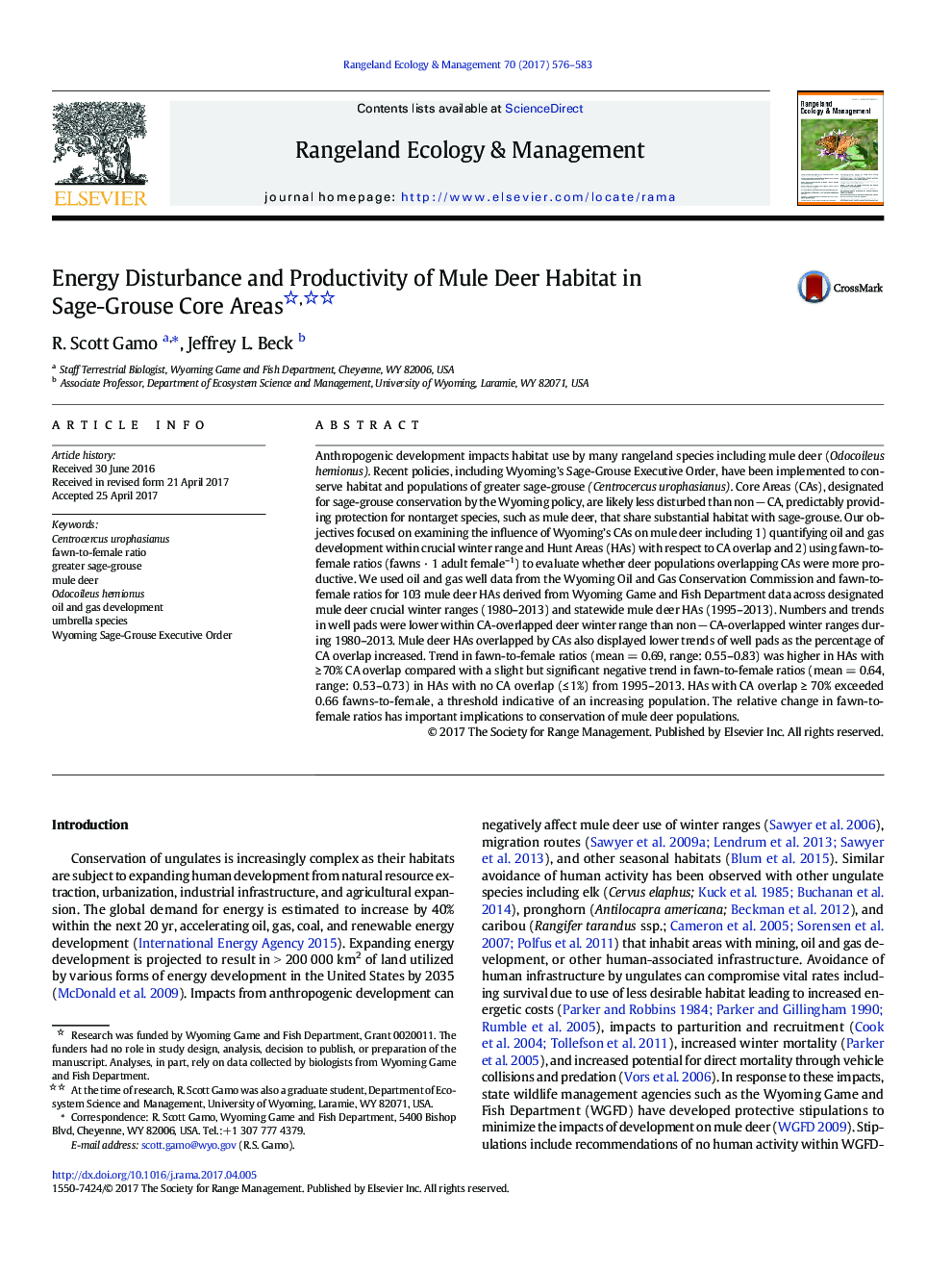| کد مقاله | کد نشریه | سال انتشار | مقاله انگلیسی | نسخه تمام متن |
|---|---|---|---|---|
| 5745203 | 1412388 | 2017 | 8 صفحه PDF | دانلود رایگان |
عنوان انگلیسی مقاله ISI
Energy Disturbance and Productivity of Mule Deer Habitat in Sage-Grouse Core Areas
دانلود مقاله + سفارش ترجمه
دانلود مقاله ISI انگلیسی
رایگان برای ایرانیان
کلمات کلیدی
موضوعات مرتبط
علوم زیستی و بیوفناوری
علوم کشاورزی و بیولوژیک
علوم کشاورزی و بیولوژیک (عمومی)
پیش نمایش صفحه اول مقاله

چکیده انگلیسی
Anthropogenic development impacts habitat use by many rangeland species including mule deer (Odocoileus hemionus). Recent policies, including Wyoming's Sage-Grouse Executive Order, have been implemented to conserve habitat and populations of greater sage-grouse (Centrocercus urophasianus). Core Areas (CAs), designated for sage-grouse conservation by the Wyoming policy, are likely less disturbed than non â CA, predictably providing protection for nontarget species, such as mule deer, that share substantial habitat with sage-grouse. Our objectives focused on examining the influence of Wyoming's CAs on mule deer including 1) quantifying oil and gas development within crucial winter range and Hunt Areas (HAs) with respect to CA overlap and 2) using fawn-to-female ratios (fawns · 1 adult female-1) to evaluate whether deer populations overlapping CAs were more productive. We used oil and gas well data from the Wyoming Oil and Gas Conservation Commission and fawn-to-female ratios for 103 mule deer HAs derived from Wyoming Game and Fish Department data across designated mule deer crucial winter ranges (1980-2013) and statewide mule deer HAs (1995-2013). Numbers and trends in well pads were lower within CA-overlapped deer winter range than non â CA-overlapped winter ranges during 1980-2013. Mule deer HAs overlapped by CAs also displayed lower trends of well pads as the percentage of CA overlap increased. Trend in fawn-to-female ratios (mean = 0.69, range: 0.55-0.83) was higher in HAs with â¥Â 70% CA overlap compared with a slight but significant negative trend in fawn-to-female ratios (mean = 0.64, range: 0.53-0.73) in HAs with no CA overlap (â¤Â 1%) from 1995-2013. HAs with CA overlap ⥠70% exceeded 0.66 fawns-to-female, a threshold indicative of an increasing population. The relative change in fawn-to-female ratios has important implications to conservation of mule deer populations.
ناشر
Database: Elsevier - ScienceDirect (ساینس دایرکت)
Journal: Rangeland Ecology & Management - Volume 70, Issue 5, September 2017, Pages 576-583
Journal: Rangeland Ecology & Management - Volume 70, Issue 5, September 2017, Pages 576-583
نویسندگان
R. Scott Gamo, Jeffrey L. Beck,